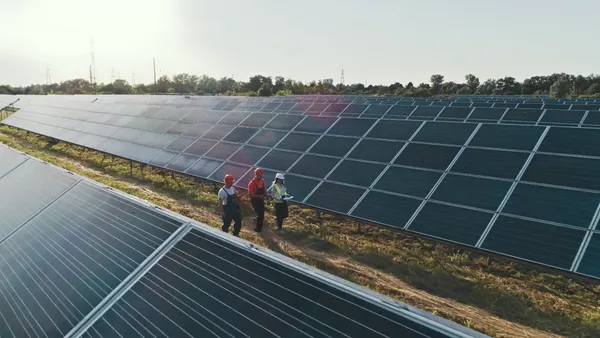Dive Brief:
-
The Energy Storage Association on Monday released a paper that charts a path toward reaching 35 GW of new energy storage systems by 2025.
-
The “35x25: A Vision for Energy Storage” white paper, created in conjunction with Navigant Research, outlines the market drivers behind the rapid growth of energy storage and the value of a “disruption-proof grid.”
- The paper argues that widespread use of energy storage could result in $4 billion in cumulative operational grid savings and the potential for more than 167,000 new jobs.
Dive Insight:
GTM Research and the Energy Storage Association already noted the first quarter of this year was the largest ever for energy storage.
There were 71 MW of storage projects deployed in the first quarter, a 276% increase over Q1 2016 and the second highest quarter since GTM and the ESA began tracking energy storage in 2013, surpassed only by installations in fourth quarter 2016. Despite that strong performance, storage is still a small part of the total U.S. market, with all storage installations composing only about 0.5 GW.
But market forces will drive much wider expansion of energy storage according to the ESA-Navigant paper. Among the market drivers are the electrification of the transportation sector, and the need for a variety of industries, such as communications and some manufacturing processes, for a more flexible and resilient grid. The paper argues that in an electrified economy, grid disruptions will become even more costly. Already, it is estimated that power outages, surges and spikes cost the U.S. economy more than $150 billion every year, the paper says.
Energy storage is key to building a disruption-proof grid by providing on-demand capacity and responsive balancing capability. The paper outlines a variety of benefits that wider adoption of energy storage could provide.For one, faster response times enabled by storage could result in $4 billion in cumulative operational cost savings by 2025, the authors say.
In addition, they say wider adoption of energy storage could enhance reliability and resilience, help reduce air pollution and create more than 167,000 jobs.
“Energy storage is the key to creating a powerful energy ecosystem whose backbone is an efficient, resilient, affordable, and sustainable grid,” Kelly Speakes-Backman, CEO of ESA, said in a statement.












